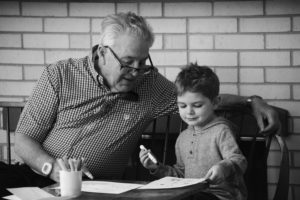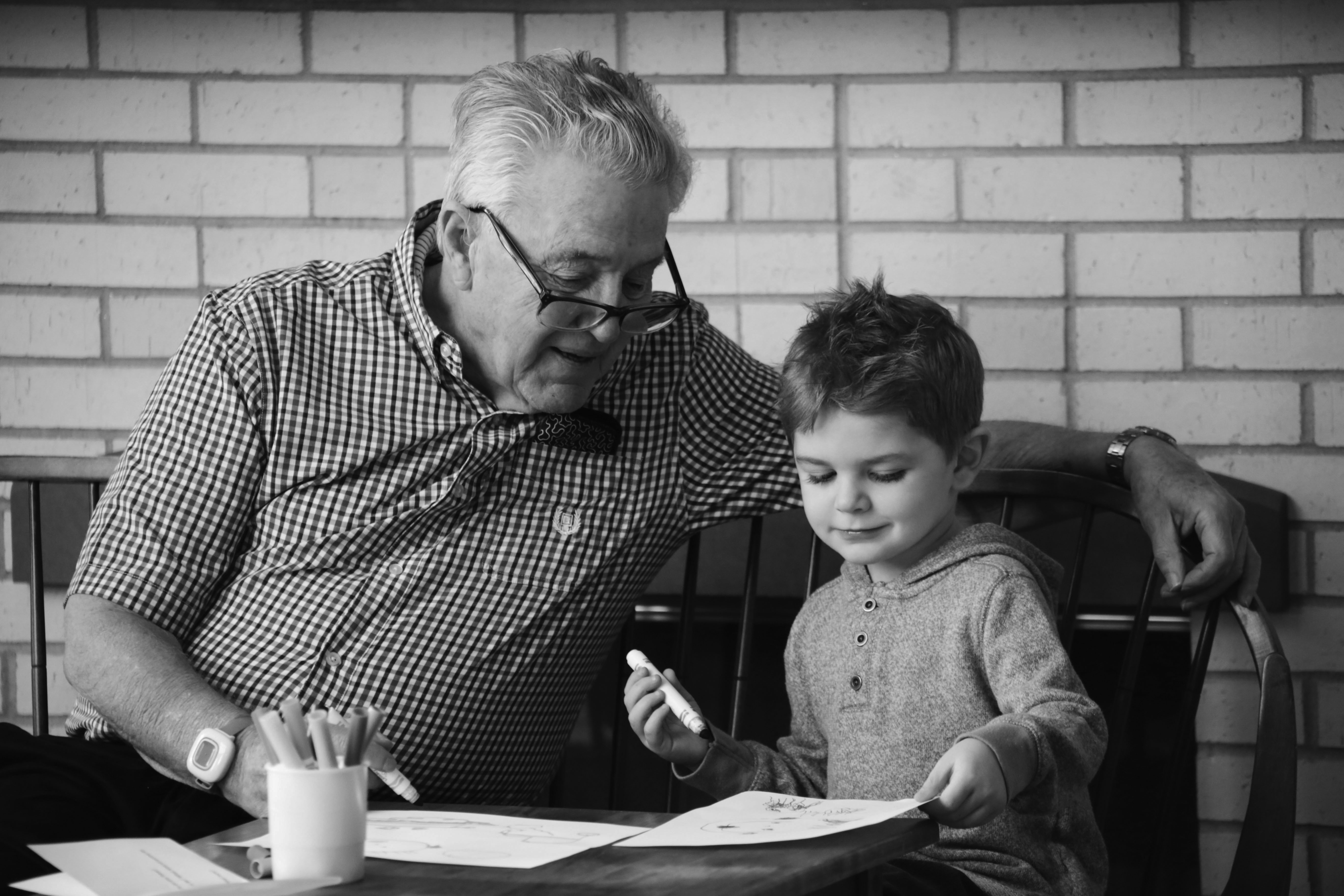By Julie Pike, Editor-in-chief
Gorham House, an assisted living and retirement home, offers an intergenerational program that with their in-house preschool. This benefits not only the children, but the senior residents as well. The children at the preschool get to interact with different residents, who will often come down just to watch the children play.

Bill Gillis, the founder of Gorham House, started with the idea of a preschool in a nursing home in 1980 when he opened Clover Manor in Auburn. Gorham House was built 10 years later in 1990, and Gillis had included the preschool right from the start.
Michelle Belhumeur, the Executive Director of Gorham House, said that Gillis was young and new to the business when he first opened Clover Manor. He also had five children at the time. She added that during summer and vacation times he would often bring his kids to work.
“He saw the relationship that was forming between the children and the residents, and that’s when he decided that he should really have kids in the building all the time,” Belhumeur said.
Today Gorham House is lively with children ranging in ages from three to five, who get to interact with the residents. The preschool has a National Association for the Education of Young Children (NAEYC) accreditation, which Belhumeur added is the highest accreditation for a preschool program. Three locations under the same owner, including Gorham House, Clover Manor, and Durgin Pines in Kittery have a similar program.
Each week the children at the preschool visit a different unit in Gorham House, including independent living, assisted living, rehabilitation, memory care, nursing home and the geriatric psych unit. Some residents also choose to visit the preschool throughout the day or to just observe the children playing outside. Belhumeur said that the children refer to the residents as their “grand friends,” instead of grandparents.
Meghan Pomelow, the director of the preschool, added that their classroom is located right next to the great room, a large living room where residents can listen to the piano or wait before meal times. Pomelow said that residents will often stop by the classroom to say hello to the children.
Throughout the week the children and residents have several chances to interact with each other. Pomelow said that at least two times a week the children spend time with their grand friends either in their units or in the great room. They’ll engage in various activities like balloon toss, bingo and crafts. They also visit residents in their rooms, where the children will often sing to them. Each month there is a themed meal during lunch where the children and residents eat the same meal. Residents can also join the children for reading time, or stop by the great room to play with them.
The benefits of these interactions are seen in both the children and the residents. Belhumeur said that it helps to expose the children to new people and helps prepare them for Kindergarten.
“Once they get to Kindergarten the teachers have said that the children are much more adapted to meeting different people,” Belhumeur said. “They see a trend that the children coming from our preschool are much more empathetic. If there is a child in a wheelchair, they don’t think anything of it because there are wheelchairs all over this building.”
Pomelow added that families will seek out their program because they value the importance of exposing their children to the elderly.
“Some of our children do not have grandparents who are local, so their parents use our program to ensure that their child has the opportunity to have grand friends in their lives on a daily basis,” Pomelow said.
The residents benefit by getting the opportunity to be with the children. Belhumeur said that they also enjoy being able to help the children in helping their social skills. The children and the residents often build lasting relationships, even after the children leave preschool.
An inevitable experience at Gorham House for the children is a death of one of their grand friends. Belhumeur said that they are all open with the children along the topic of death.
“Over the years, we have realized that the children just want us to be honest with them when a resident has passed away so we have a very honest and open, age-appropriate, conversation with them and allow them to ask any questions they might have,” Pomelow said. Parents are also notified when a resident has passed so they have the chance to continue the discussion with their children.
Belhumeur told a story about a resident that had come to Gorham House when she was very sick and at the end stage of her life. The children would visit this resident in her room and sing to her, and she particularly loved to hear the song, “itsy bitsy spider.” This became a routine with the children.
Shortly after the resident had passed away, Belhumeur said that the preschool teachers explained to the children that their grand friend had passed away. One boy didn’t believe that she was gone, and wanted to go to her room. Pomelow added that seeing she was no longer in her room gave the children closure.
“With this particular resident, the family were so appreciative about the relationship she had with the children that they brought them a stuffed animal spider as a gift,” Belhumeur said. “Now the children associate that spider with their grand friend who passed away.”
Gorham House also has a program with Village Elementary School that Belhumeur stated has been going for the past 20 years. Children from Village will come to Gorham House once a month to meet with a grand friend, often the same one.
“The Village program allows the children to build a relationship with the residents, especially for the students who continuously come each month,” Belhumeur said. “This is similar to our preschool idea but often it’s a little more involved because the children are older.”

